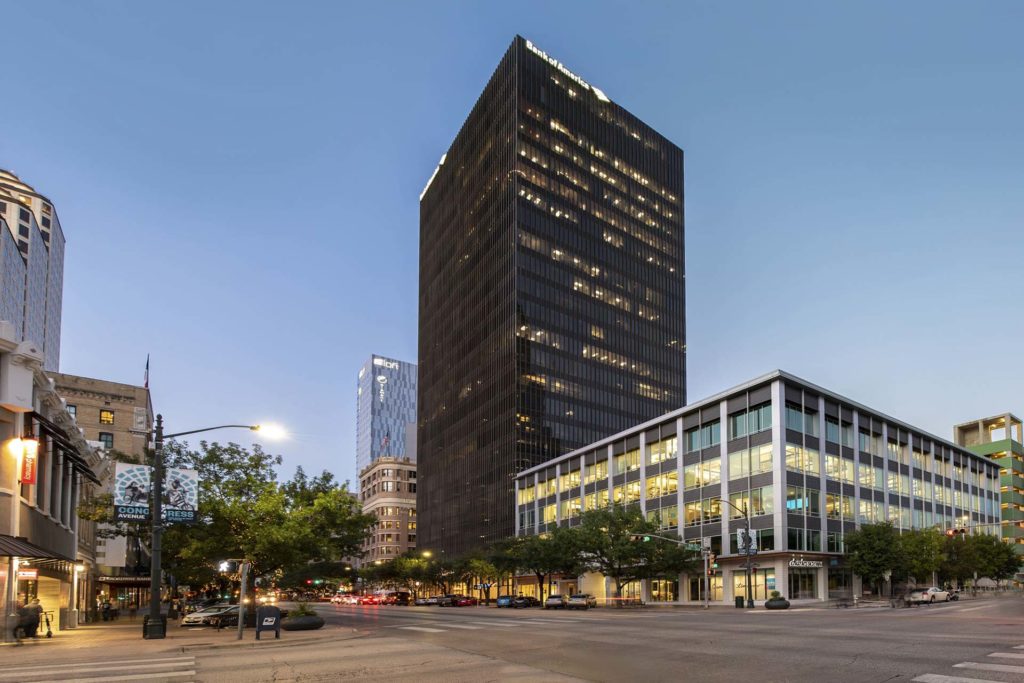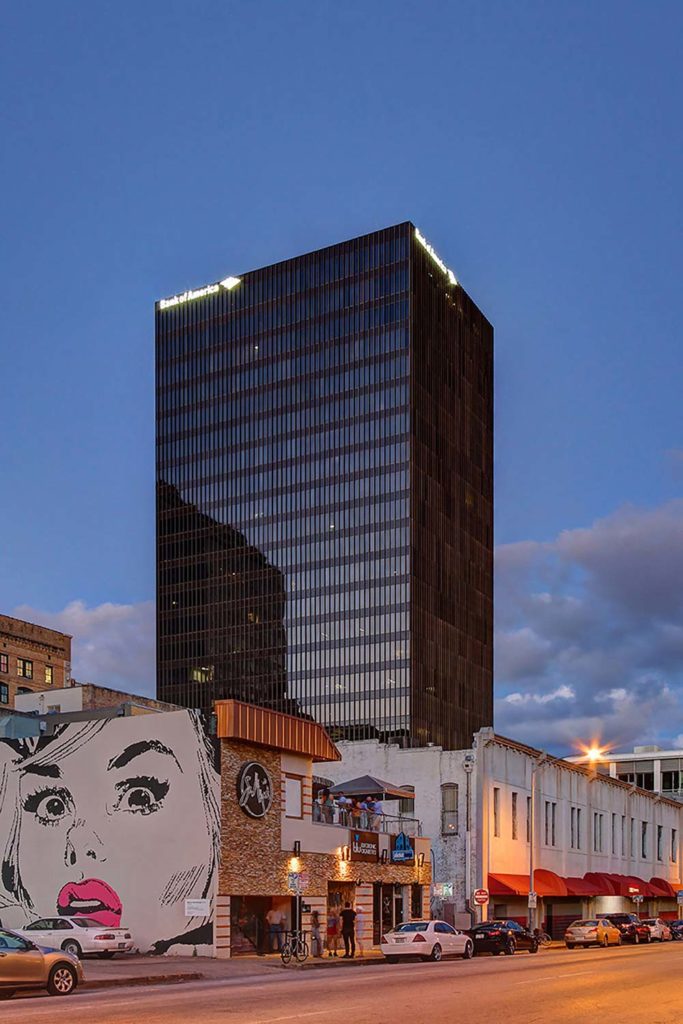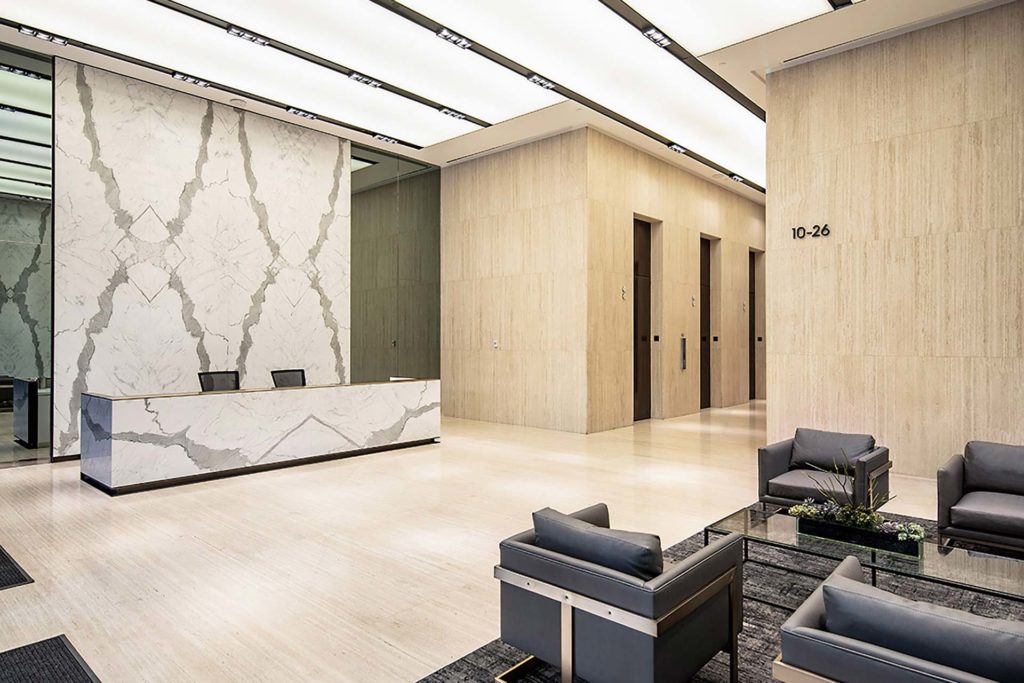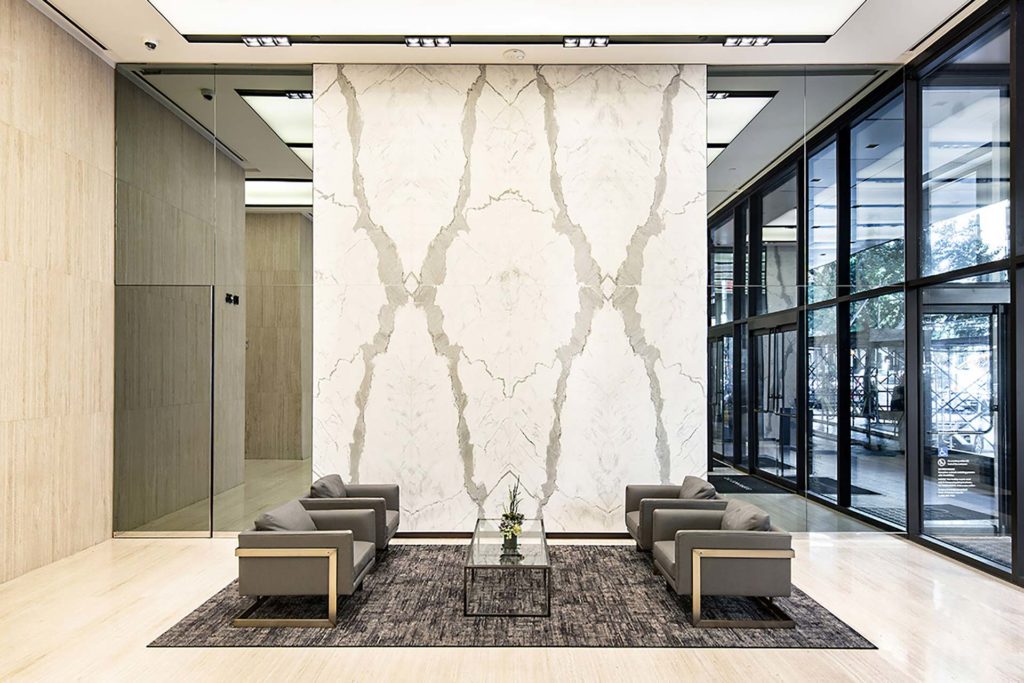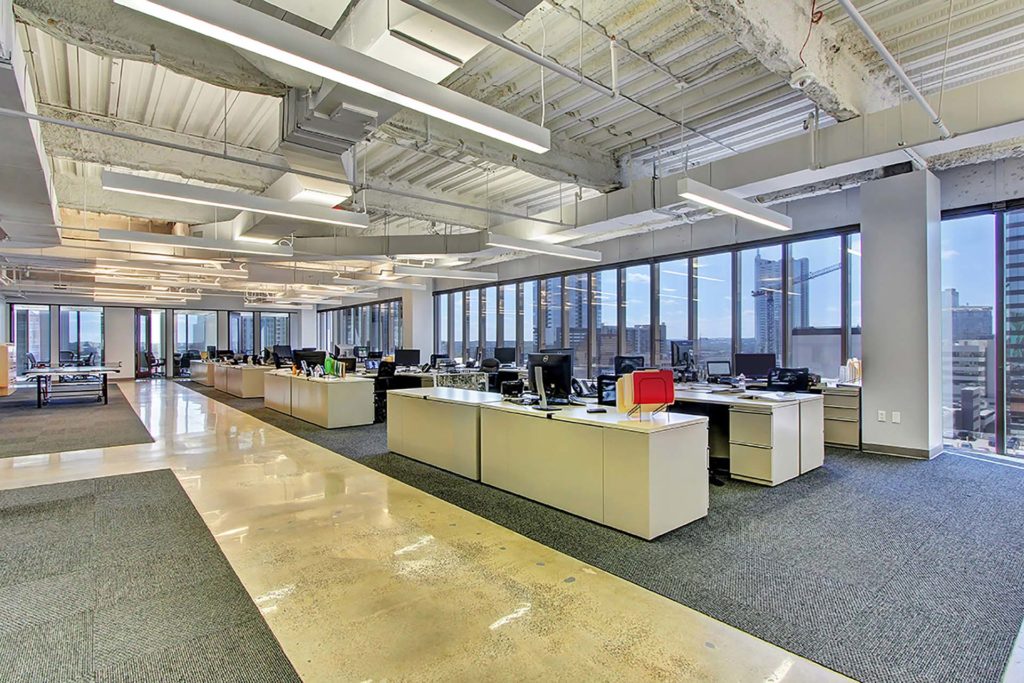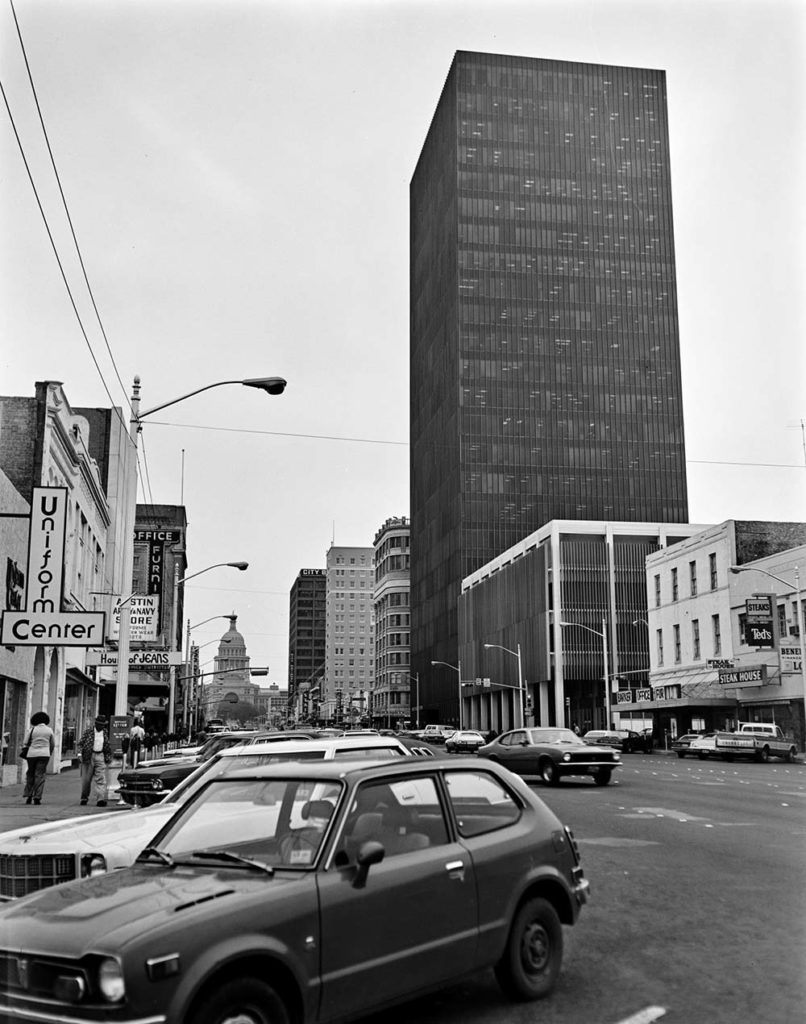Imagine yourself standing at this intersection in 1974, when the State Capitol dominated the Austin skyline and the Littlefield and Scarbrough buildings (on the northeast and southwest corners) still dwarfed their neighbors. Fast-forward one year, when this 336-foot-tall black behemoth appeared on the skyline: Looking up at this soaring glass-and-steel monolith next to its brick-and-mortar neighbors with their small, punched windows, it must have seemed like a spaceship had landed in the middle of downtown.
That spaceship was the International Style, which emerged in Europe during the 1920s and spread throughout the world after World War II. Characterized by the use of lightweight, mass-produced, industrial materials and the rejection of ornament and color in favor of pure forms, the style was particularly suited to the emergence of the skyscraper as a new building typology: the modular structures were easy to replicate and efficient to construct, while their large, rectangular floor plates were perfect for the white-collar workplaces that defined the postwar era.
515 Congress is a direct result of these characteristics. When Houston real estate mogul Gerald D. Hines built the trapezoidal Pennzoil Place in his hometown, he intentionally purchased excess quantities of glass and steel in order to capitalize on bulk discounts. The leftover materials from Pennzoil Place were used for 515 Congress, so Hines essentially got two buildings for the price of one.
But while these pure, prismatic glass boxes seemed shockingly original at first, the International Style eventually became a victim of its own success. Once touted as one of the style’s greatest advantages, the application of a universal building solution—regardless of location, climate, or context—quickly became a liability. As monoliths like 515 Congress began to appear in downtowns and office parks across the country, they started to feel like soulless symbols of the corporate rat race for the corner office.
Nevertheless, there is still something alluring about the level of pure abstraction found in examples like 515 Congress. While a recent renovation has made the ground floor feel more accessible from the street, its upper reaches remain a testament to the lofty aspirations of a movement whose vision of the future ultimately didn’t pan out. – Bud Franck
